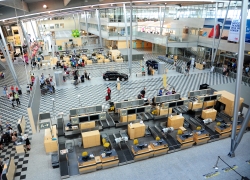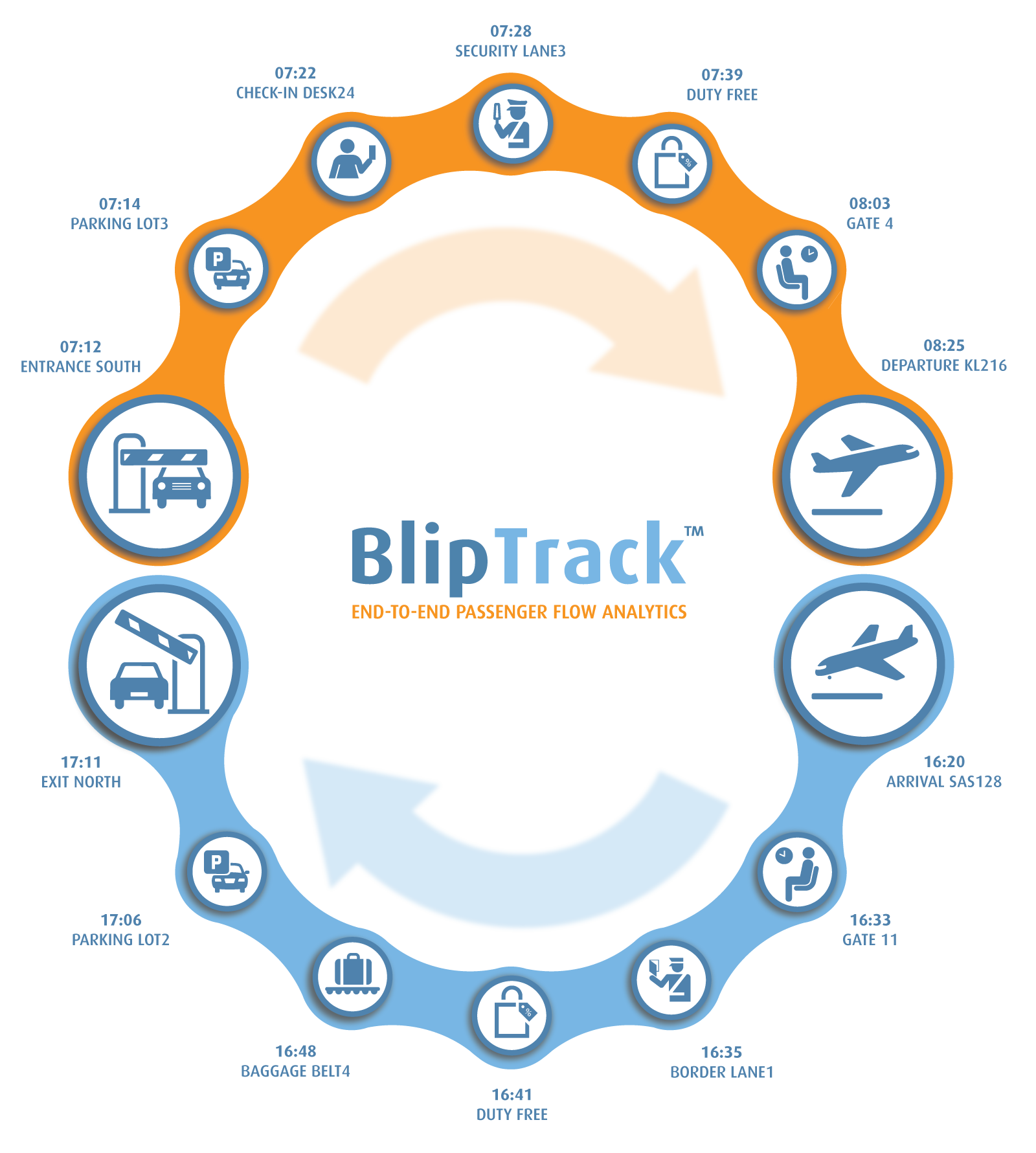Billund Airport expands BlipTrack technology to provide passenger flow visibility

Billund Check-in Area
Billund Airport in Denmark joins Amsterdam, Auckland and Bristol airports by implementing passenger flow solution from BLIP Systems. The open platform, which previously covered only the security process, now measures passenger flow, queue and dwell time throughout the entire airport area.
This expansion is now said to provide airport management with a “clear, cohesive picture of passenger experiences”, from entering the car park to departure, and everywhere in between.
To effectively measure queue and dwell times and ensure they are living up to key performance indicators, Billund Airport has for several years used BlipTrack’s technology in its security process. Now, the airport, which is Denmark´s second largest, has expanded this platform to provide visibility on how passengers move through and use the entire airport.
The expansion enables the airport to retrieve both live and empiric information about selected passenger patterns, including walking routes, entrance and exit usage, and time spent in specific areas, like the car park, check-in, security, concession area, gates and so on.
The patterns can be averaged over a day, a week, a month, as well as a specific time of day, and a specific holiday. Ultimately, this enhances the understanding of how disruptions or changes affect standard behaviour and enables the airport to optimise the operations in areas of interest. The airport will also be able to add value to existing facilities and make new investments to unlock new business opportunities.

The complete and seamless view of passenger movements will eventually help the airport to improve operational efficiency and streamline airport processes, such as check-in, security and immigration.
In addition, Billund Airport will be able to use the data to encourage passengers to spend more time in the concession areas, effectively maximising non-aviation revenue, minimising operational changes impact to the passenger flow, and boost the passenger experience.
As the platform collects data in real time, it is also able to provide early warning about potential congestion. This rapid information will allow the airport to take fast, proactive measures before the situation escalates.
“The basic requirements for happy passengers are easy parking and check-in, speedy security processing, and comfort while waiting in airport terminals. These factors can make or break a passenger’s airport experience and strongly influence how much money they spend in the concession areas. Handling passenger flow smoothly and efficiently is key to the success of an airport and its image.
To understand and improve individual areas of airport operations, it is important to understand that each area influences another and that the passenger’s journey is seen as a single process, rather than as a string of isolated events, and is key to unlocking potential gains,” says Preben Fugl Andersen, sales manager at BLIP Systems.
The solution works by placing sensors at pre-set paths, such as in the security screening process. The sensors detect mobile devices, such as smartphones; by identifying the devices as they pass multiple sensors, specific and accurate statistical information, such as queue times, dwell times and movement patterns, becomes available, without requiring active interaction from passengers.
No personal information is collected and passenger privacy is protected. The sensors are not dependent on lighting, they work 24/7, and require no maintenance once installed.
Billund Airport joins a host of other airports, including Amsterdam, Auckland and Bristol that are using the platform for passenger flow analytics. BlipTrack is employed in optimisation efforts in more than 25 airports, including JFK Airport in New York, Copenhagen, Oslo, Geneva, Milano, Birmingham, Brussels, Cincinnati and Keflavik.
Comment on this article below or via Twitter @IoTGN
